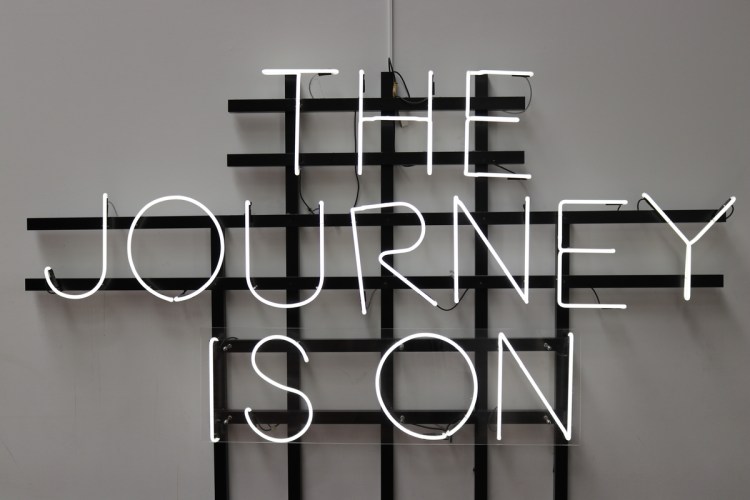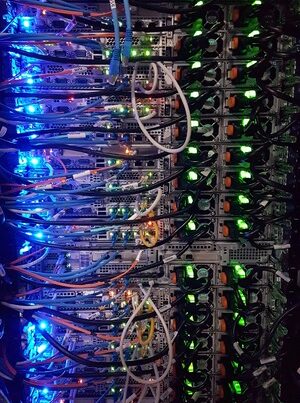The right platform can accelerate sourcing, lower transaction costs, and lower opportunity costs.
We wrote this post originally as a White Paper for the National Association of State Procurement Officials (NASPO).
The Buyer’s Journey Is Evolving
Buying goods and services for public sector organizations is difficult. As this article in Forbes puts it, “Due to an abundance of options and endless flows of information, customers find it harder and harder to buy.” What is the buyer’s journey? It is the process by which enterprises organize themselves to execute an acquisition of a good or a service.
In the past, there might have been one or two people within the buying organization responsible for executing the purchase. Now, there are groups of people from across the organization, bringing different functional expertise, to the purchasing act.
Historically, buyers relied on suppliers to educate them, with supplier engagement starting early in the process. Now, buyers want to learn independently before the first conversation with a vendor.
Before, it was possible to obtain information online invisibly. Now, when a buyer visits a supplier website looking for information, she signals her intent to purchase, unleashing an avalanche of digital communication.
Traditionally, buyers and suppliers had an adversarial relationship. The Pandemic has shown the importance of strong relationships for buyers when supplies tighten.
A key obstacle to successful procurement has been difficulty in onboarding suppliers and vetting their risk. The process is often so difficult and taxing that it discourages suppliers from selling to public sector organizations.
Governments have additional obligations in preventing (and being seen to fight) the triple threat of “waste, fraud, and abuse.” It is difficult to network and learn from others in different governments and across geographies.
Procurement professionals are under tremendous pressure from internal stakeholders who want freedom to execute without having to comply with a rigorous process. End users too often vilify procurement (or tolerate them) as necessary obstacles, instead of partners. Procurement is focused on the vital task of obtaining value-for-money.
What if there were a way to make the buyer’s journey easier? What if we could help other people in the organization recognize the strategic value of the procurement team?
What Kind of Technology Would Help Buyers in This New World?
The ideal technology solution would have several attributes.
First, it would complement the buyer’s incumbent approach. This might be the sourcing module of an enterprise resource planning system, a dedicated sourcing application, some sort of legacy software, or the use of email and spreadsheets.
Second, it would need an attractive economic model: no implementation costs, no required training, and very low carrying costs. Ideally, these carrying costs would be vary with throughput in a fashion consistent with the public interest instead of expensive subscription costs.
Third, the system would have to enable internal and external collaboration. Internal collaboration refers to the coordination of the buyer’s internal staff, across all functions. People from finance, operations, program delivery, and staffing would see the system as the central hub for organization-wide discussion of procurement projects. External collaboration means that these individuals would be able to find and interact with relevant contacts at other similar organizations to share information and advice about procurement.
Fourth, this system would need to expose market intelligence for internal use, both from the organization’s history, as well as from the data that other agencies are willing to share. Too often, this data remains “dark data,” hidden and obscure. This information can be used to structure relevant requests and to understand pricing.
How Does the Right Technology Approach Serve the Public?
The public interest in procurement is to ensure value-for-money: buying the right solution, from the right supplier, at the right price. By promoting competition on price and solution, buyers get to see a variety of options, exposing the best price. Not only does this create conditions in which “waste, fraud, and abuse” is less likely, the right technology platform can showcase these efforts, reinforcing public confidence in procurement execution. The best approach is transparent.
Generating competition means nurturing an environment that encourages suppliers to respond and to engage. This means exploiting market intelligence to write Requests for Proposal that are well-informed and relevant so that suppliers know that buyers are serious players with whom they want to develop long-term relationships.
A system that permits rapid onboarding of suppliers by standardizing the due diligence process across procurement organizations massively expands the universe of suppliers buyers can solicit. Instead of only requesting participation by suppliers the buyer has onboarded previously, now buyers can solicit any supplier. If they select a supplier with whom they do not have an antecedent relationship, then the buyer can be confident of rapid, effective vendor risk assessment and administrative engagement. Buyers, in effect, would share suppliers
How Does the Right Technology Make Life Easier for Internal Stakeholders?
Internal stakeholders in the procurement conversation include not only purchasing staff, but also end users, people in control positions, and others impacted by the acquisition. By involving this wider constituency in the procurement exercise at a much earlier stage, the right technology platform transforms procurement into a strategic exercise. The platform becomes the concentrated nexus for coordinating purchasing at every stage, affording convenience, lower transactions costs, and the accumulation of data for market intelligence, all in a transparent, audited environment.
Coincidentally, this elevates the visibility and the status of the procurement function within the organization. Others from across the enterprise, at a variety of levels, begin to appreciate the value that the Chief Procurement Officer and her staff bring to play in improving outcomes for all.
How Does the Right Technology Make Life Easier for Procurement?
The right platform can accelerate sourcing, lower transactions costs, and lower opportunity costs. What is the buyer’s journey? It is the way in which buyers execute a purchase. The right platform can lead to better outcomes and better experiences.
Sourcing is faster because it takes much less time to put together a well-informed Statement of Work, leveraging the structured data repositories and the experience of other users. Transactions costs fall because the platform makes it easy to engage suppliers with a dedicated tool, as opposed to labor-intensive interaction, often by email. Opportunity costs drop in non-linear proportion to the number of responding suppliers, enabled by the platform’s ease-of-use. Procurement staff also have the opportunity to develop professionally with access to content, including potentially educational content, as well as the ability to network socially across organizations.
How Does the Right Technology Benefit NASPO Users?
Not only does the ideal platform have a way for NASPO users to coordinate with one another across agencies and geographies, sharing data, intelligence, and suppliers, it helps NASPO members to proselytize procurement best practices internally, in an inclusive manner, that advances the influence and impact of Chief Procurement Officers and their staffs. Procurement as a function becomes strategic, data-driven, and relevant in new ways.
This Is What We Have Built at EdgeworthBox
EdgeworthBox is a platform that helps buyers purchase the right solution, from the right supplier, at the right price. We have a social network in the form of profile pages and messaging. Buyers can check out supplier marketing materials without triggering digital marketing alerts. Anyone on the platform can message anyone else. Buyers can obtain market intelligence from other buyers, suppliers can partner with other suppliers, and buyers and suppliers can get to know one another. We have public and private repositories of structured data related to live RFPs, historic RFPs, and historic contracts. See how others put together their Statements of Work and what they paid, across hundreds of categories. Suppliers control a “lockbox” of answers to standard due diligence questions and supporting documents that they release to buyers upon request. Our product development pipeline includes AI tools for automatic SoW generation and supplier response generation, as well as Web3 smart contracting for commoditized products and vendor identify management. Buyers and suppliers join for free. Buyers pay a small fee to execute reverse auctions.





